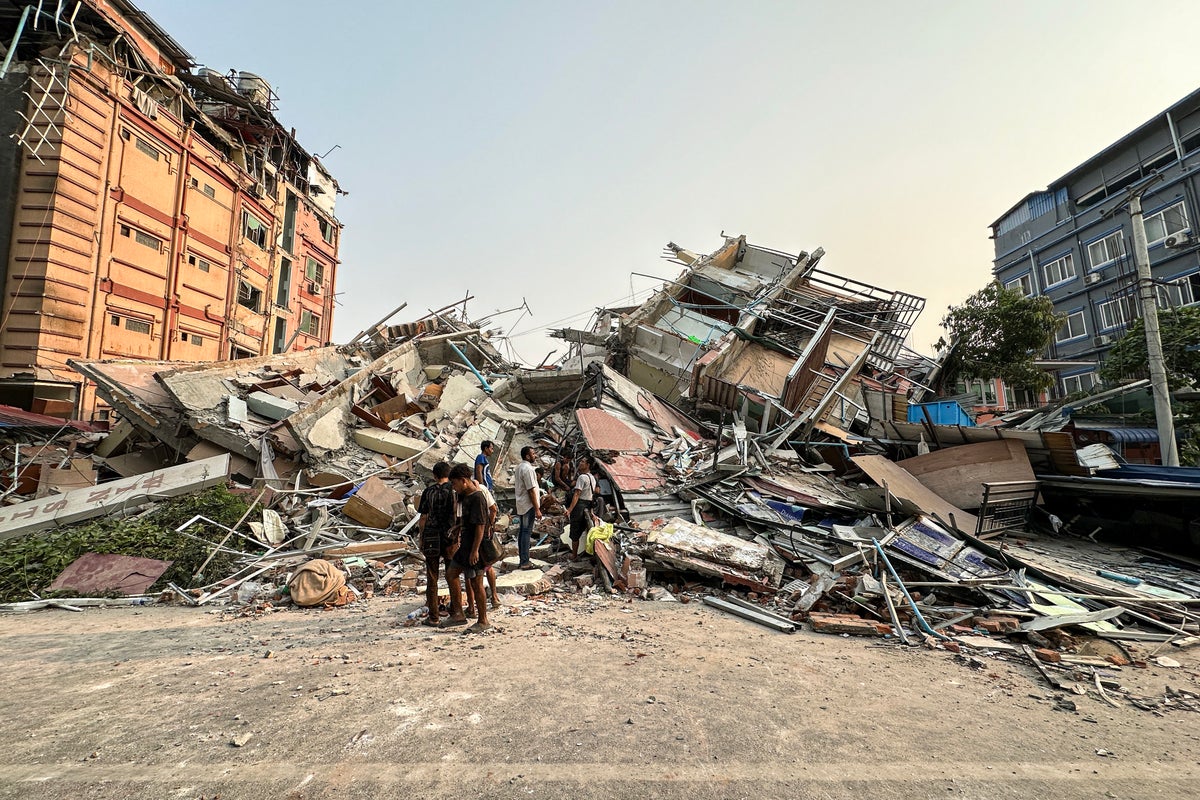Days before a devastating earthquake struck Myanmar, killing over 3,000 people and injuring thousands more, seismologists had warned in a study that regions in and around China were at an increased risk of such calamities.
The study, published last month in the Chinese earthquake administration’s journal, Geodesy and Geodynamics, linked earthquake cycles to fluctuations in the Earth’s rotation.
Researchers, including Zhu Hongbin from the Beijing Earthquake Agency, analysed nearly 150 years of seismic data, starting 1879, and found six major seismic “active periods” in the region.
Each period correlated with shifts in the Earth’s rotational speed and corresponding tectonic plate stress realignments, scientists said.

One active period, from 1897 to 1912, recorded 12 major quakes clustered along the Pamir-Baikal seismic belt in East Asia.
A series of quakes that hit northeastern Qinghai-Tibet Plateau between 1920 and 1934 and another set on its southeastern edge from 1946 to 1957 similarly corresponded to “active periods”, as did a cluster of tremors striking Yunnan and northern China from 1970 to 1976.
The fifth phase saw earthquakes striking the Bayan Har block on the eastern Tibetan Plateau between 2001 and 2015.
The sixth, and current, active phase was centred on the periphery of the Bayan Har block, the study noted. “We are now in the sixth stage, with earthquakes occurring primarily around the outskirts of the Bayan Har region in Mongolia,” it said. “In the future, the stress axis will shift northeast, increasing the risk of quakes in Sichuan, Yunnan and the Himalayan region of China. We may currently be in the early stage of an active period of earthquakes.”

The planet’s rotational speed has been estimated based on the length of one day, or LOD. The LOD has fluctuated over millennia, cycling through four major and 16 smaller acceleration-deceleration periods.
The earth has been adding some 2 milliseconds to a day’s length every century, partly due to the friction caused by the moon’s pull.
In the last three millennia, though, the spin has slowed by some six hours, departing “from uniformity”, the researchers pointed out in a previous study.
The deceleration phases, as the slowing is called, have tended to amplify north-south tectonic stresses in East Asia, causing megaquakes in the Pamir-Baikal belt. Acceleration phases, on the other hand, intensify northeast-directed stress, affecting the Tibetan Plateau.
The latest study warned of accumulating seismic strain along some fault segments in southwest China, which were behind the magnitude 6.6 quake that struck Sichuan in 2008. It also highlighted a northward push towards the Eastern Himalayan region.
Not all seismologists in China have been convinced by the latest findings, however.
Seismologists such as Gao Mengtan from the Chinese earthquake administration have cautioned against overinterpreting the results of the new study.
Global earthquake activity has, in fact, been quieter lately than in previous years, Dr Mengtan was quoted as saying by the South China Morning Post.
“There is currently no clear evidence that the Earth has entered an active period of earthquakes,” he told local media. “In fact, the earthquake activity so far in 2025 is lower than the historical average.”


